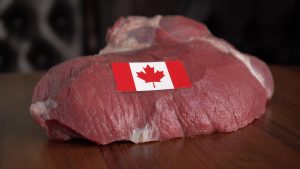A new report highlights the value of the international beef trade — a somewhat contentious subject since Congress’ repeal of MCOOL in response to a non-tariff trade barrier in 2015.
Here’s what the report has to say:
The U.S. is both a major exporter and importer of beef, and while cattle producers market a single commodity (cattle), thousands of different products are eventually sold. Despite the common notion that a “pound of beef is a pound of beef,” product diversity and trading partners support U.S. beef and cattle production and value.
Titled Assessing Economic Impact That Would Follow Loss of US Beef Exports and Imports, the project was commissioned by beef councils in Kansas, Oklahoma, and Texas and authored by Dr. Derrell Peel and Dr. Glynn Tonsor.
So, why does the U.S. trade beef internationally?
“The U.S. is a relatively mature market in terms of where we are with beef demand, but there’s a lot more potential in the global market, broadly speaking,” Peel said. “Potential growth in the industry is going to rest more and more with the trade sector, and we highlight the fact that the marketplace has grown a lot in the last 20 to 30 years.”
- Beef exports and imports combine to provide opportunities to increase value to the U.S. industry by exporting products that have more value in foreign markets and importing products that can be sourced more economically in international markets.
- The U.S. imports a vastly different product than it exports, and receives a higher $1/lb value for exports, resulting in a net economic gain.
- Research indicates that a 10 percent reduction in beef imports and exports over a 10-year period would result in a $20 billion impact on cattle producers.
While international trade may not seem parallel to domestic trading, the report details that market activity, buying and selling is about seeking value and the efficient allocation of resources. The primary difference in international trade, is that two governments are involved in determining access sand rules under which trade occurs.
A cease in beef trades would be catastrophic to the cattle industry. A 100 percent loss of beef trade would result in a $129 billion loss for feeders and $68 billion loss for fed cattle sellers, reducing industry size.
»Related: Ag trade can mitigate economic impacts of climate change

Why do both imports and exports matter?
While imports and exports are vastly unrelated, the basic principle of trade reciprocity says that we should not expect to be able to export if we do not allow imports.
In the past 20 years, beef imports have averaged 2.925 billion pounds. Prior to 2017, the United States was the largest beef importing country before being surpassed by China.
So, then why is the largest beef producing country in the world importing beef? Companies that import beef are sourcing specific products that are either more expensive in the U.S., not produced domestically, or are not available due to limited supplies.
According to the report, the biggest driver of beef imports is the ground beef market. Ground beef, does in fact account for nearly half of the total U.S. beef consumption. Imported trim or primal cuts supplement domestic supplies of lean processing beef.

What products exactly are being brought into the U.S.?
Beef imports are specific products imported from specific sources for specific uses. The main driver of beef import demand is the ground beef market. A demand that has only increased based on market demand for hamburgers in the U.S.
Between 2016 and 2020, 51 percent of beef imports were processing beef or trim, 21 percent of imports were primals and subprimals. An additional 18 percent were cuts, 7 percent were cooked products, and the last 3 percent accounted for edible offals.
The primary beef importing countries during that time frame were Canada (29 percent), Australia (22 percent), Mexico (19 percent), and New Zealand (16 percent).

What value does exporting beef provide to the U.S.?
The economic role of beef and variety meat export is substantial and growing. In 2021, the report indicated an estimated 22 percent of fed cattle value was attributed to exports. Despite widely held notions, data included in the report suggests that beef exports and imports work together to maximize U.S. beef and cattle production value.


